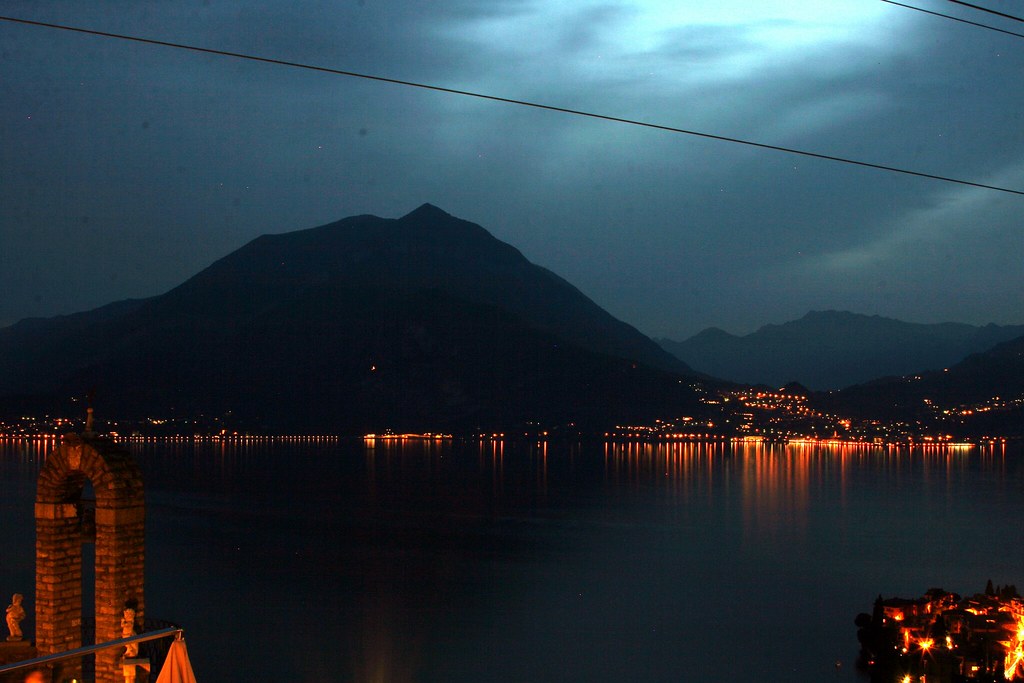skywalkerbeth
TPF Noob!
- Joined
- Nov 27, 2007
- Messages
- 101
- Reaction score
- 0
- Can others edit my Photos
- Photos NOT OK to edit
Hi everyone
I just got back from a great trip to Europe with my Mom. I lugged
along my new spiffy (and thankfully, ultralight) tripod.. and took
it out exactly once.
I can't say I am entirely happy with the results, and mostly because
of the focus. How can you auto-focus at night time (or even
manually)?
The subject photo taken from a balcony high up above Lake Como,
focusing on the far shore after dark. The lights on the other side
are kind of fuzzy. I'd say it's no less than a mile away, but the
camera just doesn't seem to know where to focus and manually focusing
when it's dark is tough too.
I also seem to find that setting the focus point on "full infinity"
doesn't seem to work, even though clearly it's a mile or more away.
Any thoughts? is it possible my lens needs to be calibrated?
I've seen some stellar night photos where everything is quite crisp
and clear, and I just don't know how to achieve that yet.
Here is the subject photo, it also looks a little grainy, which is weird because it was ISO 100.

I just got back from a great trip to Europe with my Mom. I lugged
along my new spiffy (and thankfully, ultralight) tripod.. and took
it out exactly once.
I can't say I am entirely happy with the results, and mostly because
of the focus. How can you auto-focus at night time (or even
manually)?
The subject photo taken from a balcony high up above Lake Como,
focusing on the far shore after dark. The lights on the other side
are kind of fuzzy. I'd say it's no less than a mile away, but the
camera just doesn't seem to know where to focus and manually focusing
when it's dark is tough too.
I also seem to find that setting the focus point on "full infinity"
doesn't seem to work, even though clearly it's a mile or more away.
Any thoughts? is it possible my lens needs to be calibrated?
I've seen some stellar night photos where everything is quite crisp
and clear, and I just don't know how to achieve that yet.
Here is the subject photo, it also looks a little grainy, which is weird because it was ISO 100.






![[No title]](/data/xfmg/thumbnail/38/38261-db20f6f92ee8f0d4c5cf1536e308638b.jpg?1734172147)







